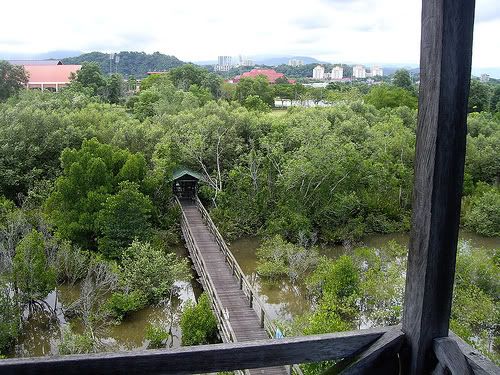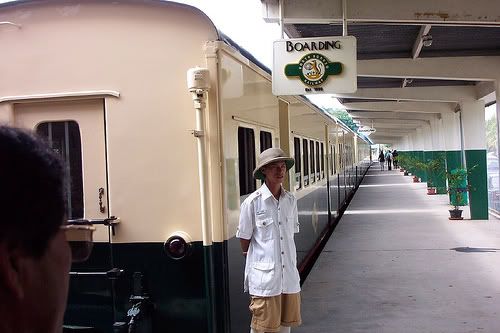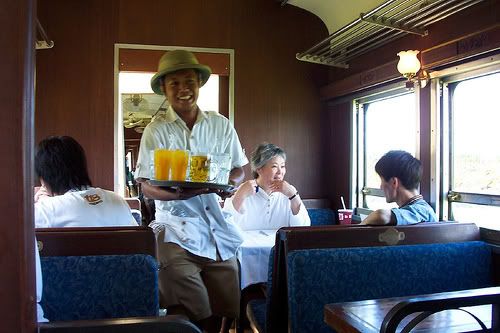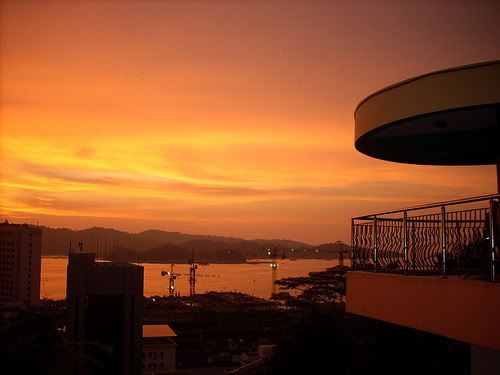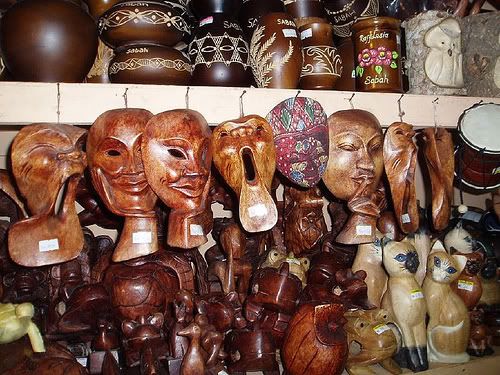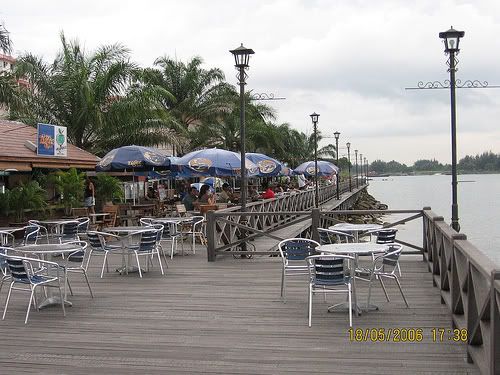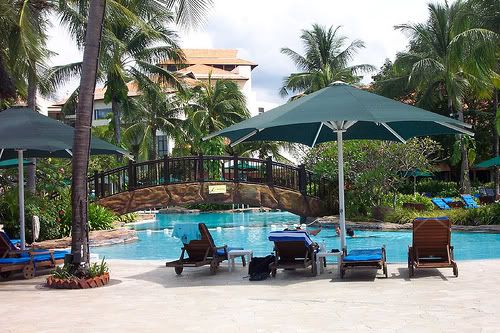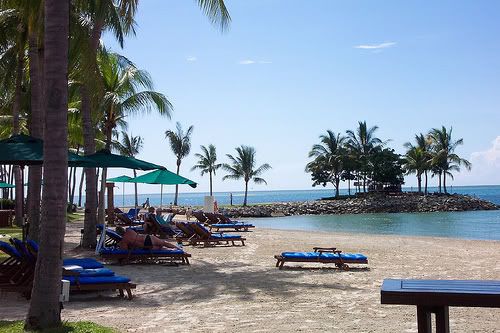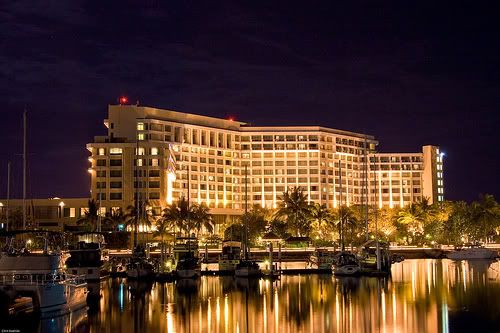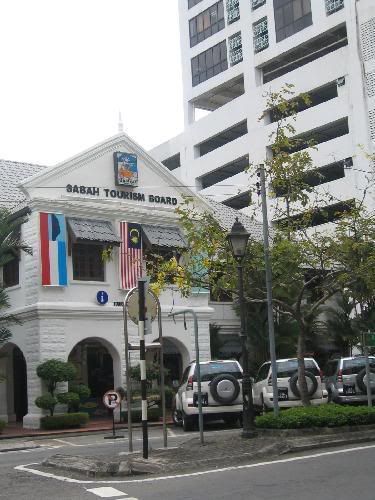Kota Kinabalu is abound with tour operators that can suit to your every every taste and budget. It is likely that you will encounter many of these travel agencies at Wisma Sabah.
Tanjung Aru Tours & Travel (Tel:222210; www.tanjungarutourstravel.net; Wisma Sabah, Jln. Haji Saman) Based at the luxury Shangri-La Tanjung Aru Resort, TATT incorporates Sabah Sightseeing, Beachbums Borneo and Absolute Scuba, offering everything from KK city tours (RM95) to full-day diving trips (RM285), plus some more unusual options like kitesurfing (three-day course RM800).
LODGING
Kota Kinabalu has a varied range of backpacker's hostels
Hostels are also often the best places to find information and seek out fellow travelers to go dutch on tours, treks and the like, especially to Mt Kinabalu.
Akinabalu Youth Hostel (Tel:272188; www.akinabaluyh.com; 133 Jln Gaya; dm RM20-23, r RM50-56) Friendly staff, snazzy decor and copious freebies make this a premier option among KK's hostels, particularly if you find a quiet time to take advantage of the gratis internet and VCD movies. Accommodation is mostly in four-bed rooms.
North Borneo Cabin (Tel:272800; www.northborneo cabin.com; 74 Jln Gaya; dm RM20-23, r RM50; The Akinabalu's sister hostel has a smaller a lounge and larger dorms (eight to 10 beds) but offers all the same facilities, and often manages to feel more sociable.
Borneo Global Backpackers (Tel:270976; http://www.bgbackpackers.com; 29 Karamunsing Godown, An Karamunsing; dm RM22-25, r RM45-58) Fervently recommended by backpackers, Global is a bit out of the way at the southern end of town, but free airport transfers, sociable staff and good standards compensate nicely.
11117
Step-In Lodge (Tel:233519; www.stepin lodge.com; Lot 1, Block L, Kompleks Sinsuran, Jln Tun Fuad Stephens; dm RM25-3S, r RM60-80) Step-In Lodge is a new arrival, and is so far awaiting discovery by the backpacker hordes. It is a spotless paragon of good hostelry, with a big 'TV lounge, kitchenette, laundry service, cheap internet, proper mattresses and plenty of other plus points. Most rooms have four beds, with one large eight-bed `family room'. Even the bedclothes look friendly!
MIDRANGE
Most of KK's hotels fall into this price range (RM70 to RM250), and it's possible to find some good bargains. TV, International Direct Dialling (IDD) phone and private bathroom generally come as standard, with some places oftering extras such as minibars in deluxe or suite rooms. Most hotels listed here also have lifts, though not always with step-free access.
Pantai Inn (Tel:217095; 56-57 Jln Pantai; s/tw/tr RM67.20/72.45/88.20) This great-value central hotel is so popular with bargain-minded Chinese businesspeople that it's a good idea to book in advance. You can't fault it for cleanliness, and the shiny lobby sets the tone nicely.
Zaharah Hotel (Tel: 012-803 0387; www.zaharah hotelsb.com; Block 3, Api-Api Centre; apt from RM75; I%) ) Tucked away inside the shopping centre, keen self-caterers could have a butchers' at these small but neat kitchenette apartment rooms.
Mandarin Hotel (Tel:225222; jw3333@hotmail.com; 138 Jln Gaya; r RM78-140; (-.'J) The flagship in a chain of four properties around town, the Mandarin's reception hints at a Chinese theme that never manifests itself in (ho rooms. Comfort levels are OK, especially if you go `deluxe'.
Kinabalu Daya Hotel (Tel:240000; www.kkdayd hotel.com; Lot 3-4, Block 9, Jln Pantai; r RM95-230, str RM210-270, with breakfast) The rooms he rr aren't huge but plenty of travellers swear by this central midrange stalwart, which offers wood floors, nonsmoking rooms and full Astro satellite TV (not controlled by rc ception!). There's a popular bar-restaurant, with karaoke of course. Ask here about trips to Sungai Labuk, a little-visited alternative to the Kinabatangan.
Hotel Capital (Tel:231999; 23 Jln Haji Saman; i RM144-173, ste 230-294)The capital's location is its second-best feature, with adequate accommodation let down by sonic borderline grotty showers. The hotel's best feature is of course the Little Italy restaurant on the ground floor.
D'Borneo Hotel (Tel:266999; www.dbornen hotel.com; Lot 6, Block L, Kompleks Sinsuran, Jln Tun Fuad Stephens; r with breakfast RM145-175) Newly opened and still immaculate, D'Borneo offers excellent quality accommodation near the waterfront, aiming for boutiquehotel style across 24 rooms. Discounts of RM25 are often available; breakfast is in the lobby cafe (complete with quirky designer chairs).
Hotel Shangri-La (Tel:212800; www.kkshang.com.my; 75 Bandaran Berjaya Complex, Jln Berjaya 5; r RM258.75-293.25, ste from RM632.50) Three storeys of business-class sheen, creeping into the midrange category as discounts consistently knock a full RM100 or so off the rack rates. Despite the name, this hotel is not connected to the luxury Shangri-La Tanjung Aru Resort.
TOP END
